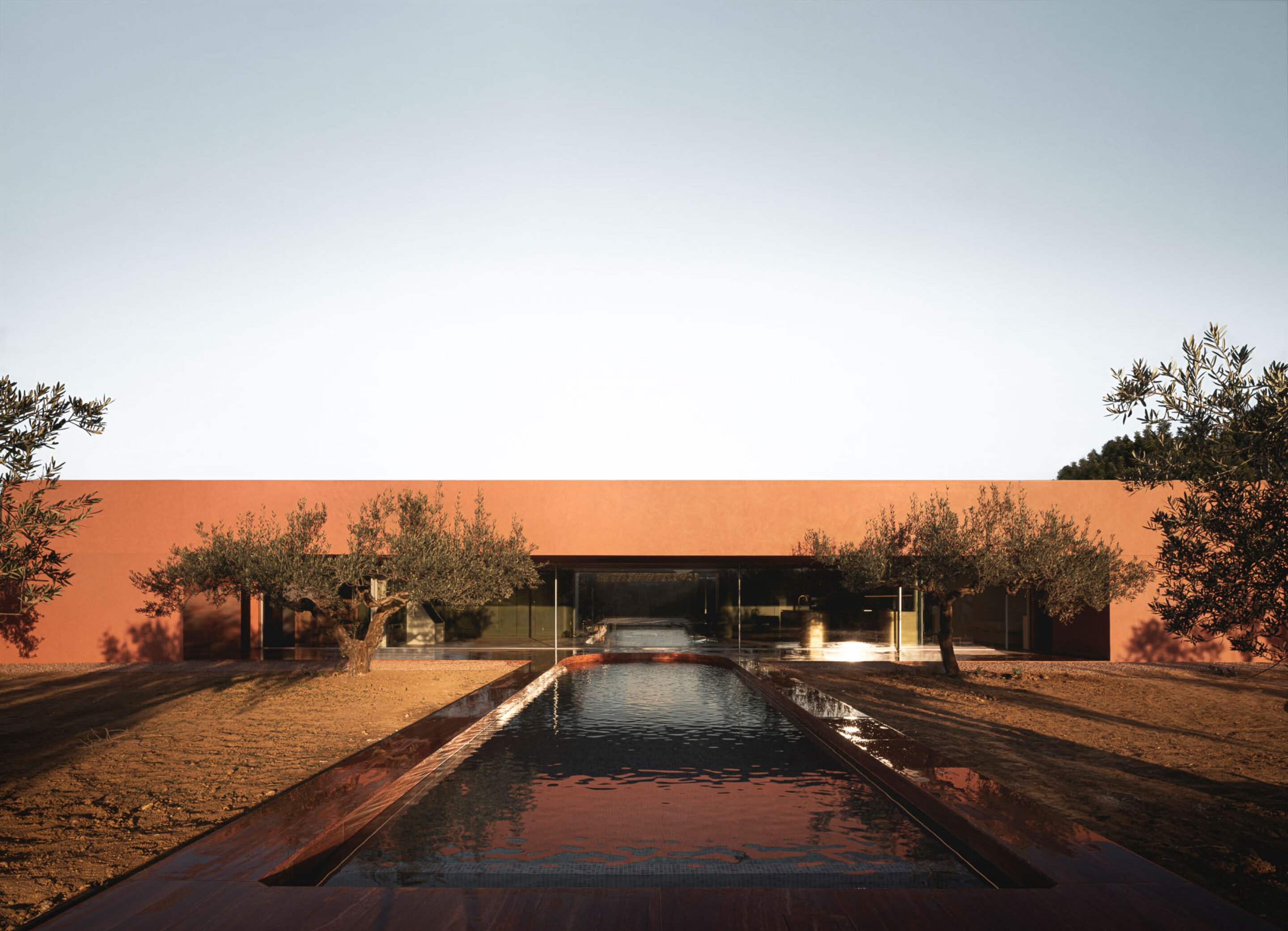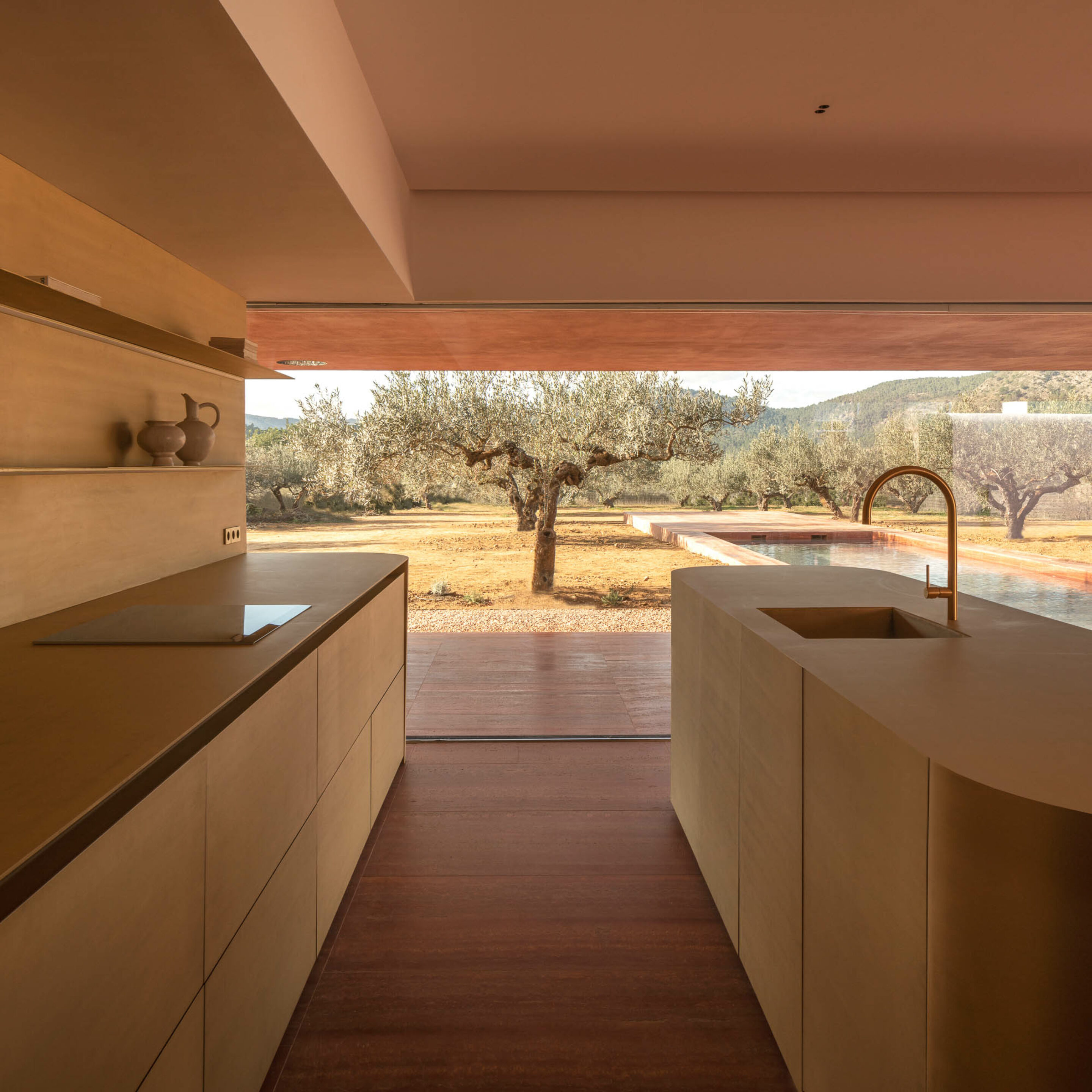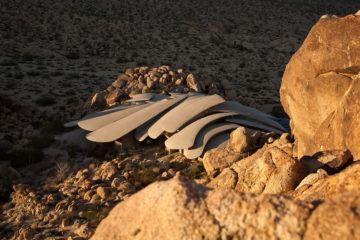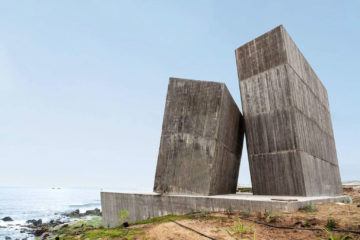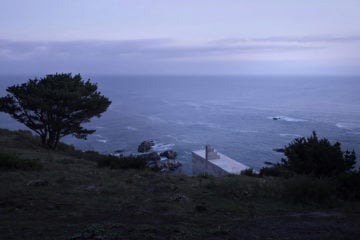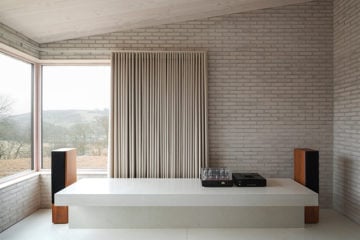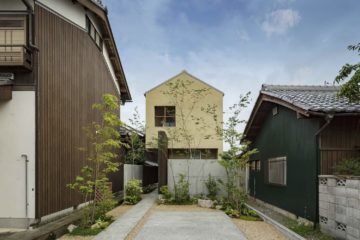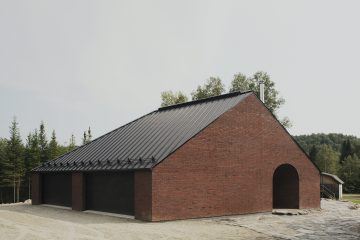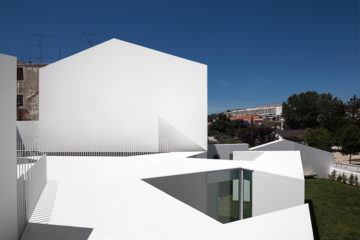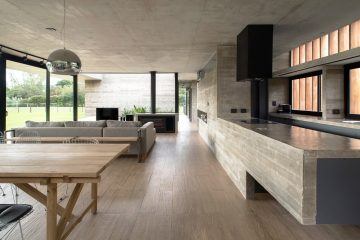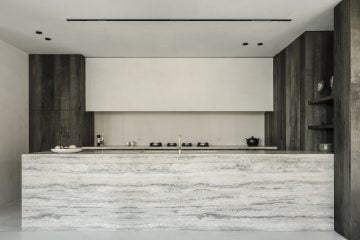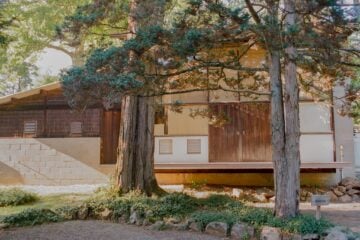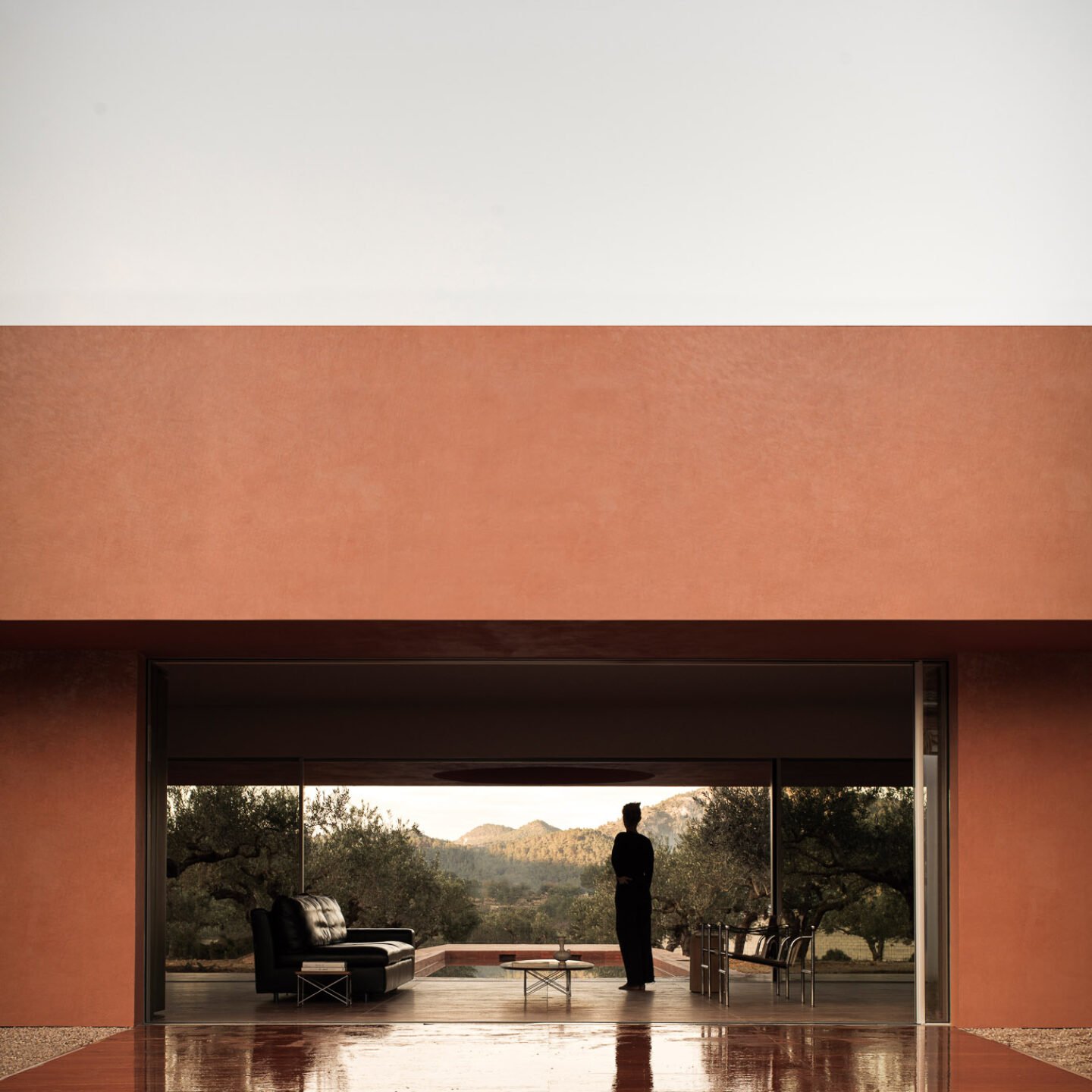
Balzar Arquitectos’ Olive Grove Oasis Quietly Celebrates Its Sublime Setting
- Name
- Balzar Arquitectos
- Project
- La Casa de los Olivos
- Images
- David Zarzoso
- Words
- Anna Dorothea Ker
Laced with the scent of wild herbs, a warm wind brushes the scorched sienna earth. Leaves rustle on the gnarled branches of ancient olive trees. In a semi-circular pool fringed with travertine slabs that gleam in the light, cool water gently ripples outwards. The stark sensoriality of this setting – the last olive grove bestowed with the privilege of building permission on the outskirts of Quesa, a mountainous village in Spain’s Valencia province – demands an equally singular architecture. With their single-family residence ‘La Casa de los Olivos’ (the House in the Olive Grove), completed in 2021, Balzar Arquitectos have created a sculptural shelter that contrasts and harmonizes with the ancient land it occupies.
Established in 2018, the Valencia-based family architecture studio of José María García Zarco, his son Txema García Ballester and Laura Moreno Albuixech, Txema’s partner in work and life – has become known for its pursuit of beauty through simplicity. Eschewing extraneity, the architects take their cues from each site to realize a restrained vernacular in which light and materiality come to the fore. In its low-slung linearity and monolithic character, La Casa de los Olivos embodies this philosophy in its purest form. Moreno Albuixech spoke to Ignant about the privileged history of the plot on the cusp between urban and rural zones, opening a dialogue between the natural and the artificial and what no photo can reveal about the home’s serene magnetism.
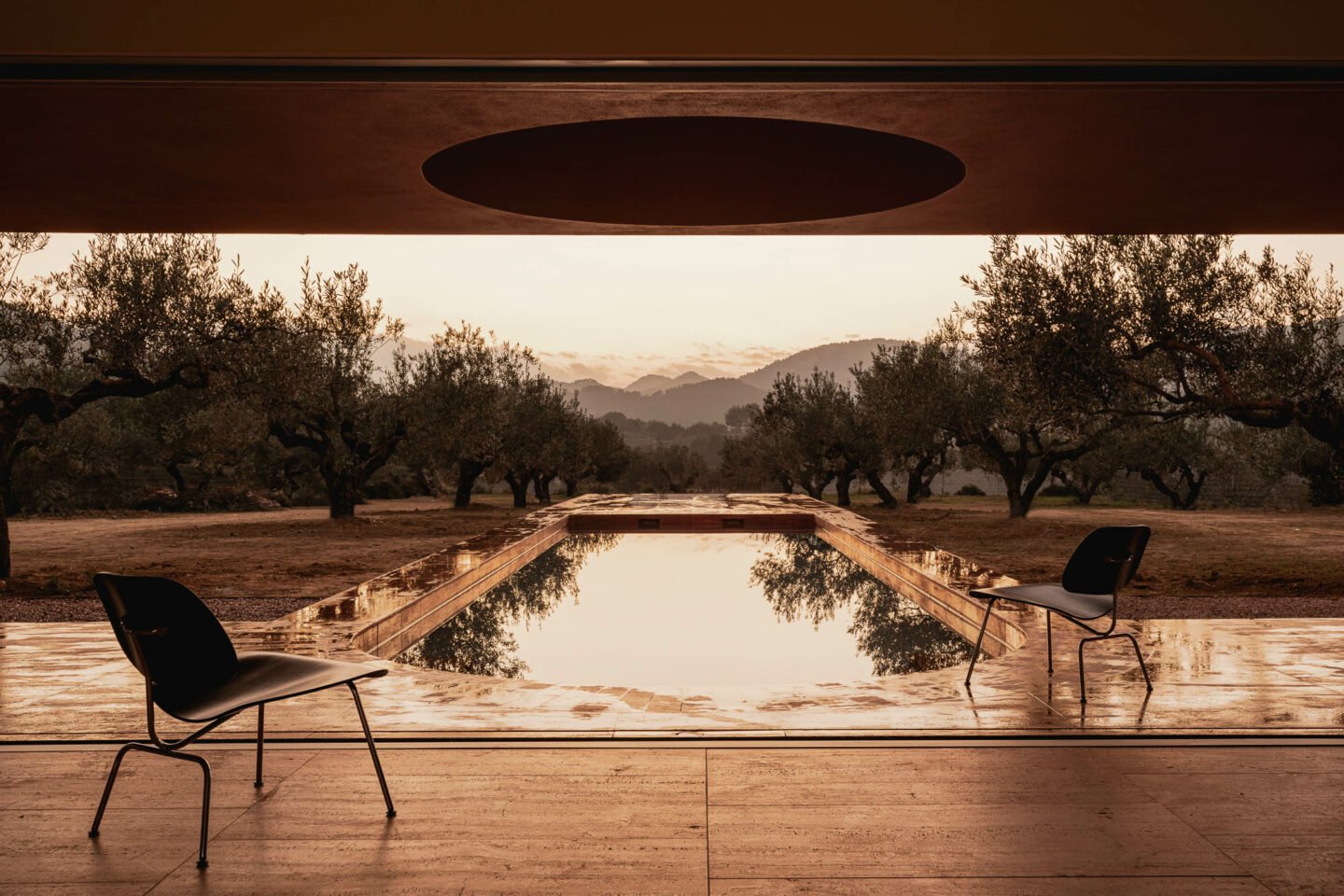
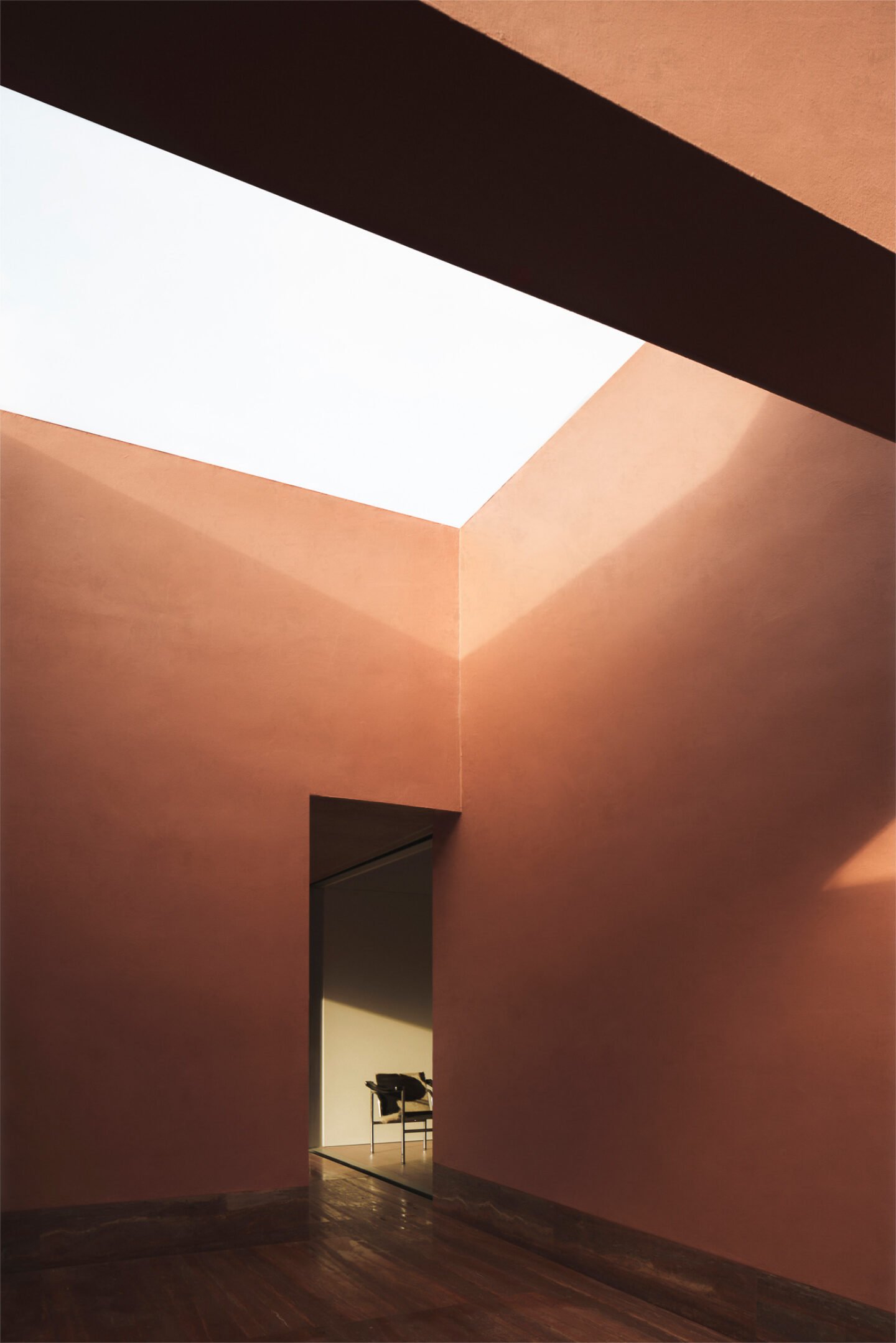
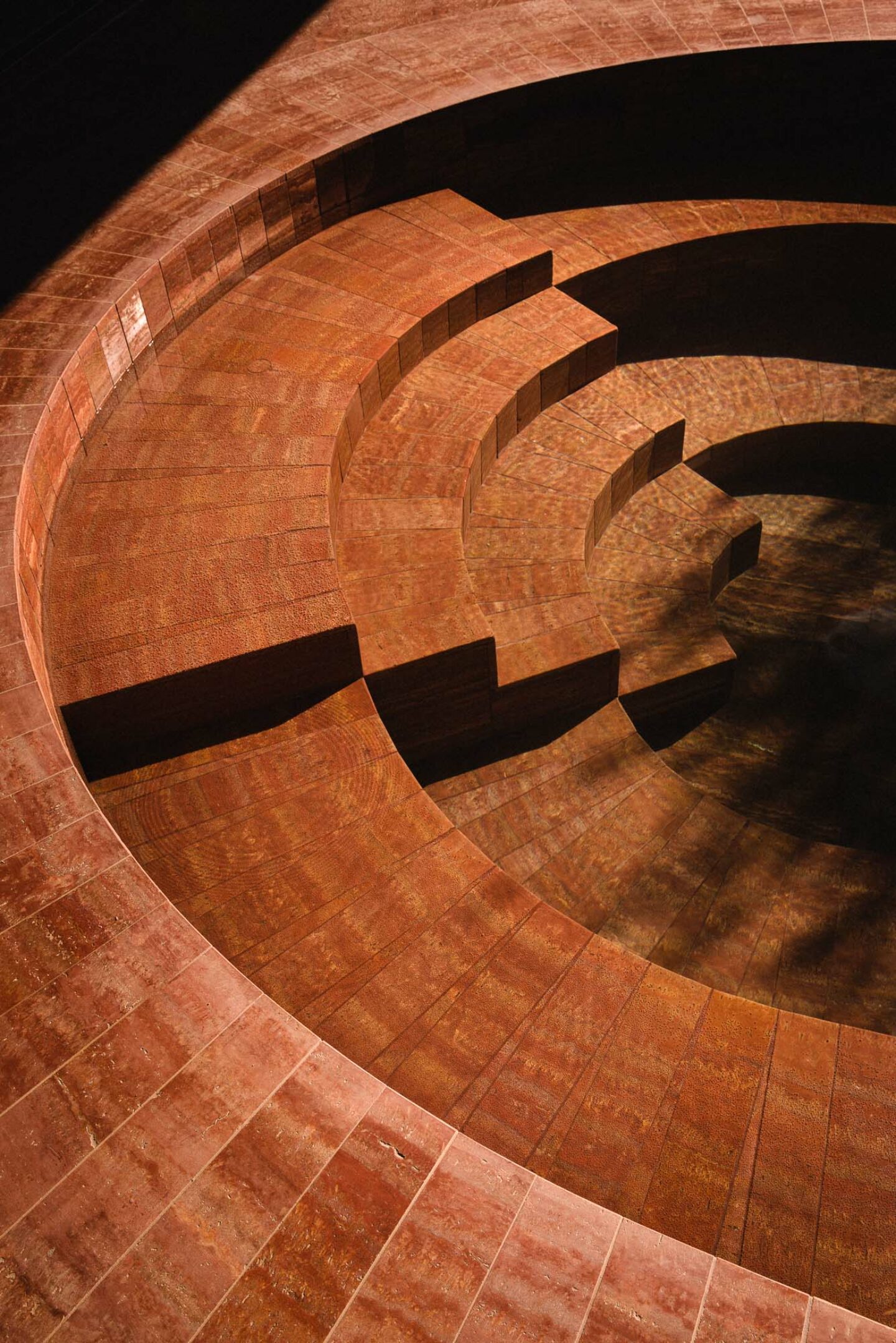
“Creating a dialogue between the natural and the artificial, between the olive trees and the house – this was the main idea of the project.”
La Casa de los Olivos takes its name from its location amongst a centuries-old olive grove on the urban-rural threshold of Quesa, Valencia. What captured your attention when you first viewed it?
We had known about this plot for a long time. In fact, it was a relative of mine who recommended it to our clients. There is nothing but calm and tranquility in this place. The landscape of centuries-old olive trees with its reddish earth, the distant views towards the mountains, and the golden sunset – what else is there to say?
What natural challenges did the site pose that required the most innovative responses?
When it came to the intervention, on the one hand, we were clear that we wanted to respect this place and tried to keep as many olive trees as possible. On the other hand, we wanted the interior spaces to be in direct relation to this landscape. Creating a dialogue between the natural and the artificial, between the olive trees and the house – this was the main idea of the project.
When the clients came to you with the initial brief, what were the key priorities and non-negotiables?
The clients really had few requirements and were very open to our proposals. They only asked that the house be one story for their comfort and that color and water have a strong presence.
The house was built on a galvanized steel structure typical of the ‘Balloon Frame’ building style in the United States. How did you adapt this building technique to local conditions?
The idea was to build in a more efficient way, taking principles from local architecture but with an adaptation to our time. The steel frame construction is something new in Spain, but there are already very successful companies that have been working with this system for years.
This type of construction had two fundamental advantages. First, it made it possible to eliminate all thermal bridges, providing a continuous insulation envelope on the outside and integrating the structure into the walls without any protrusions that would affect the perception of the space. This made the house very energy efficient. Second, the structure was completed in just one week, speeding up the process and allowing for very precise construction.
As for the harmonization of the house with its surroundings, this was achieved mainly through materiality and volumetry. The traditional mortars, the earthen colors, and the volume of a single story create a beautiful dialogue between the artificial and the natural.
How does La Casa de los Olivos reference and depart from the region’s architectural vernacular?
Although the project contrasts with other houses in the village of Quesa, it does not contrast with the surrounding landscape. Quite the opposite, it seeks to complement and enhance the natural environment. The low, elongated shape of the house, together with careful proportions, allows it to harmonize with the landscape, ensuring that it does not dominate or detract from the overall context. In addition, we have reinterpreted one of the most widely used resources in our Mediterranean architecture, which is patios. In this case, there is a generous welcoming patio and two side patios that allow the interior to be open to the exterior and, at the same time, protect the views of the neighbors.
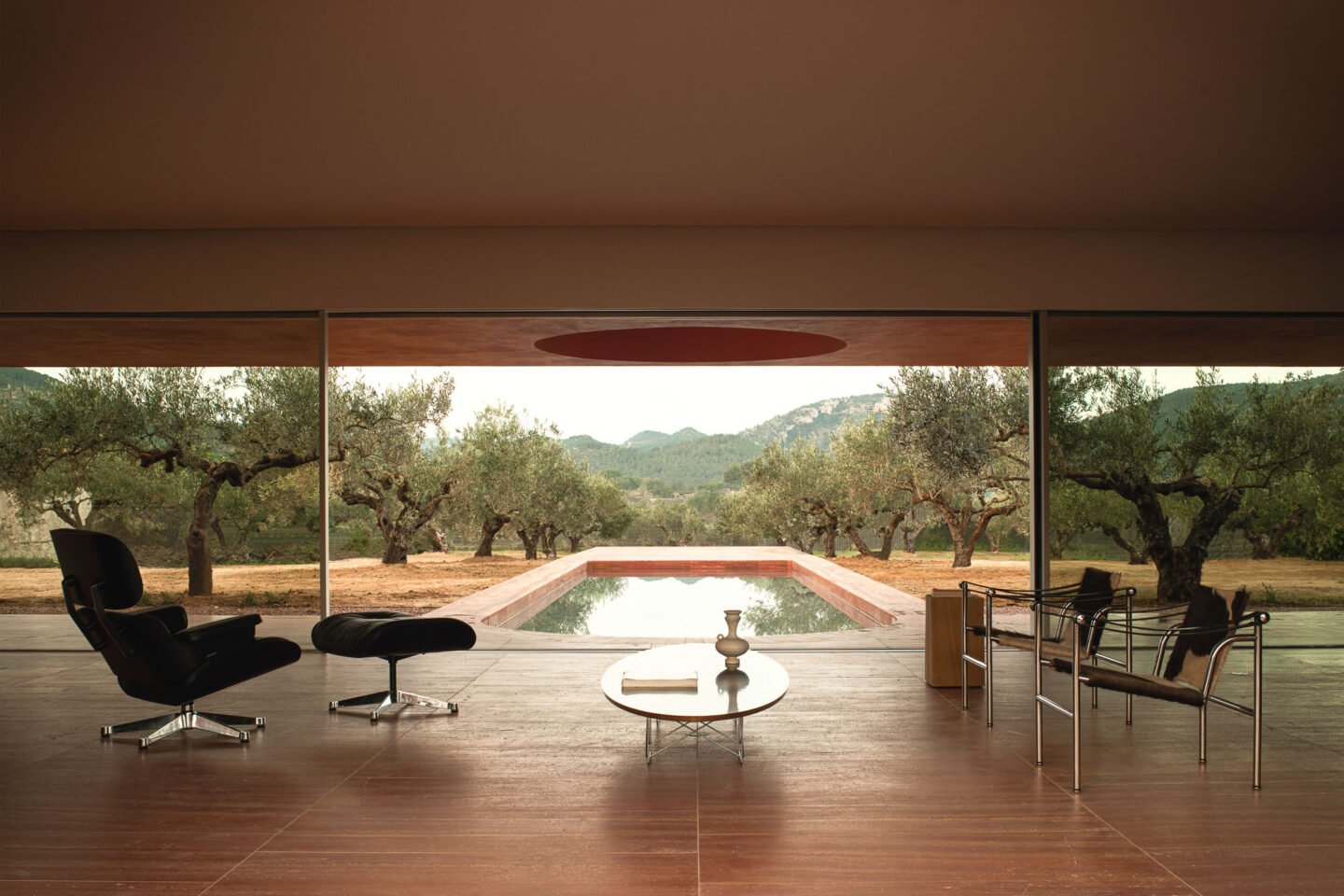
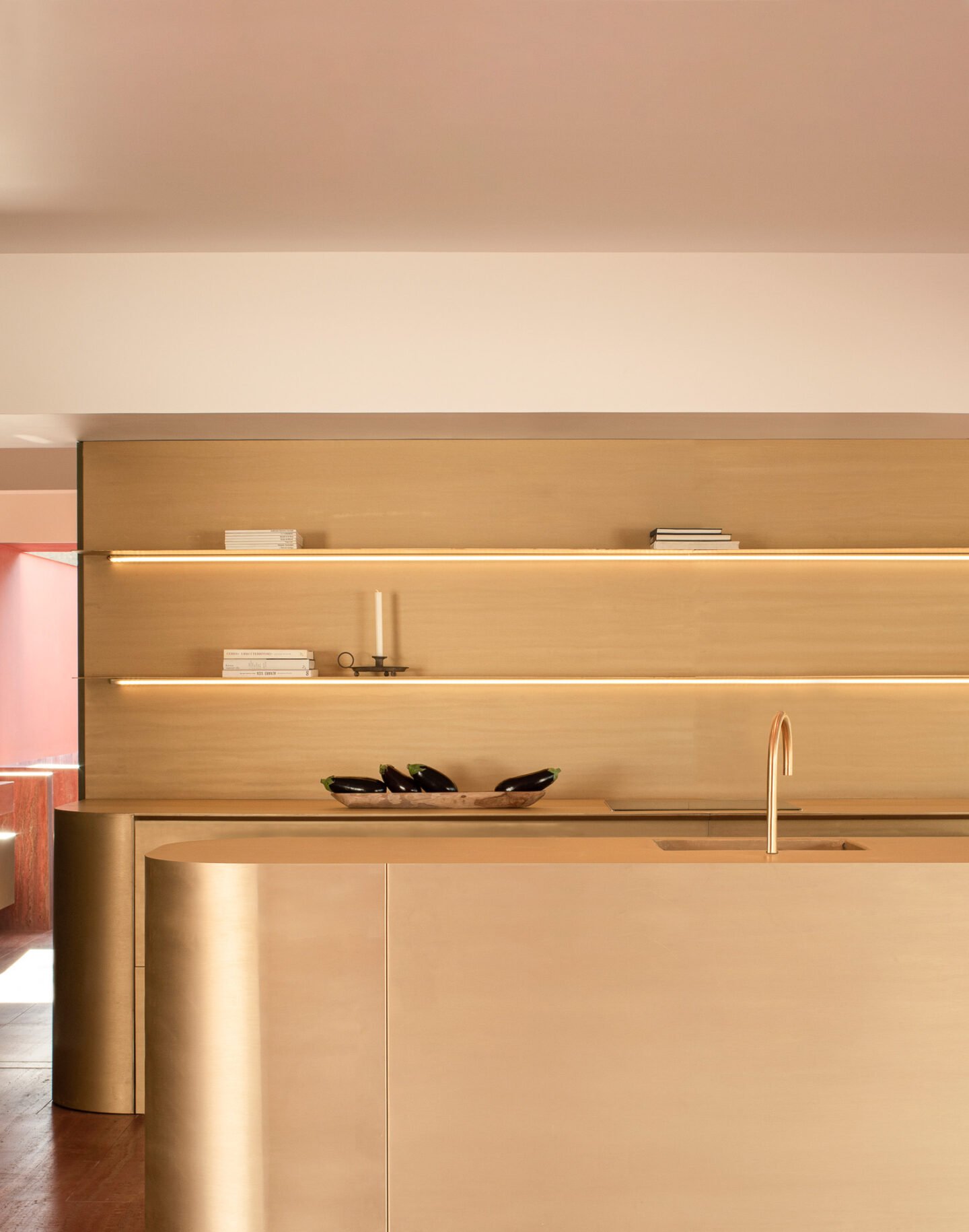
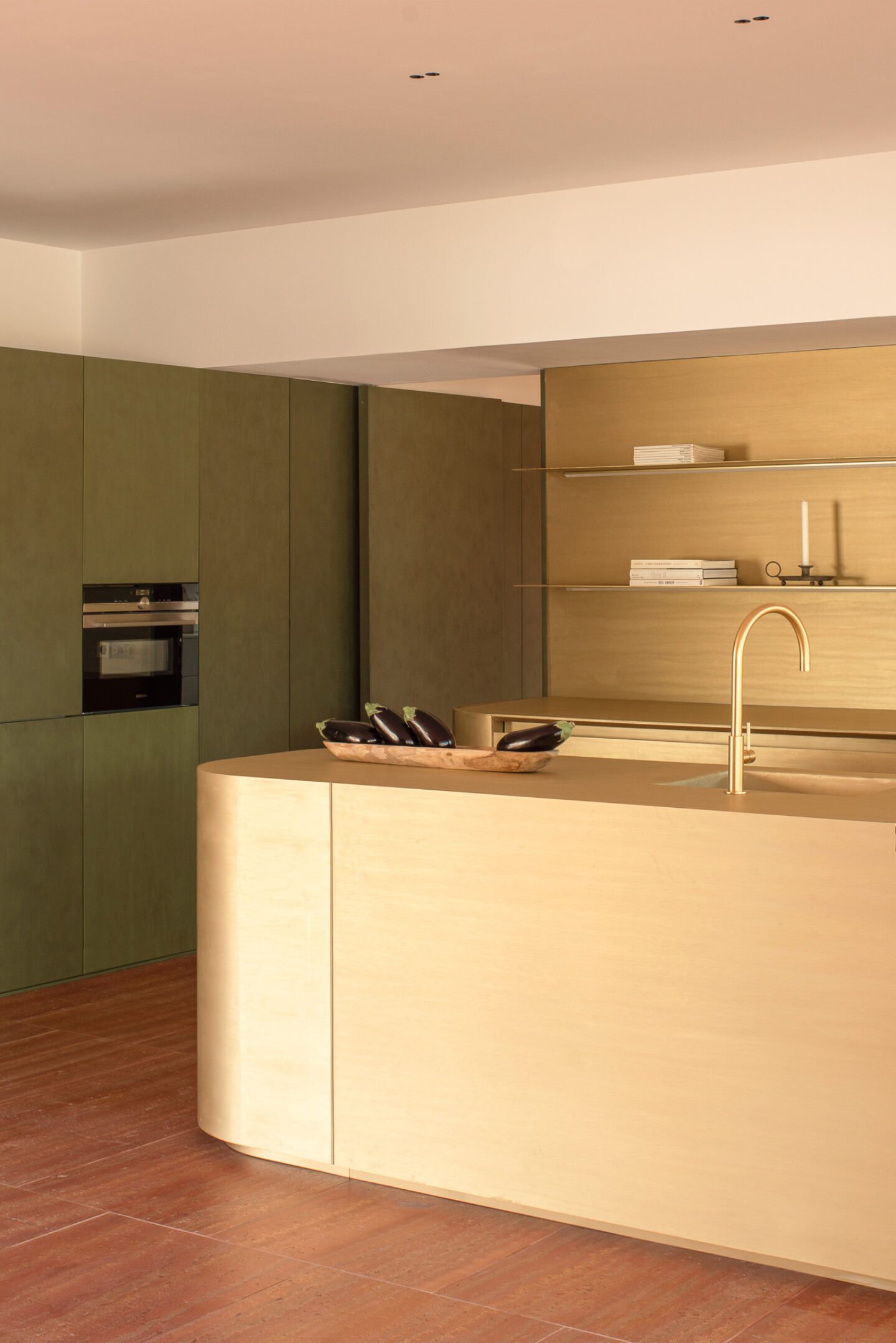
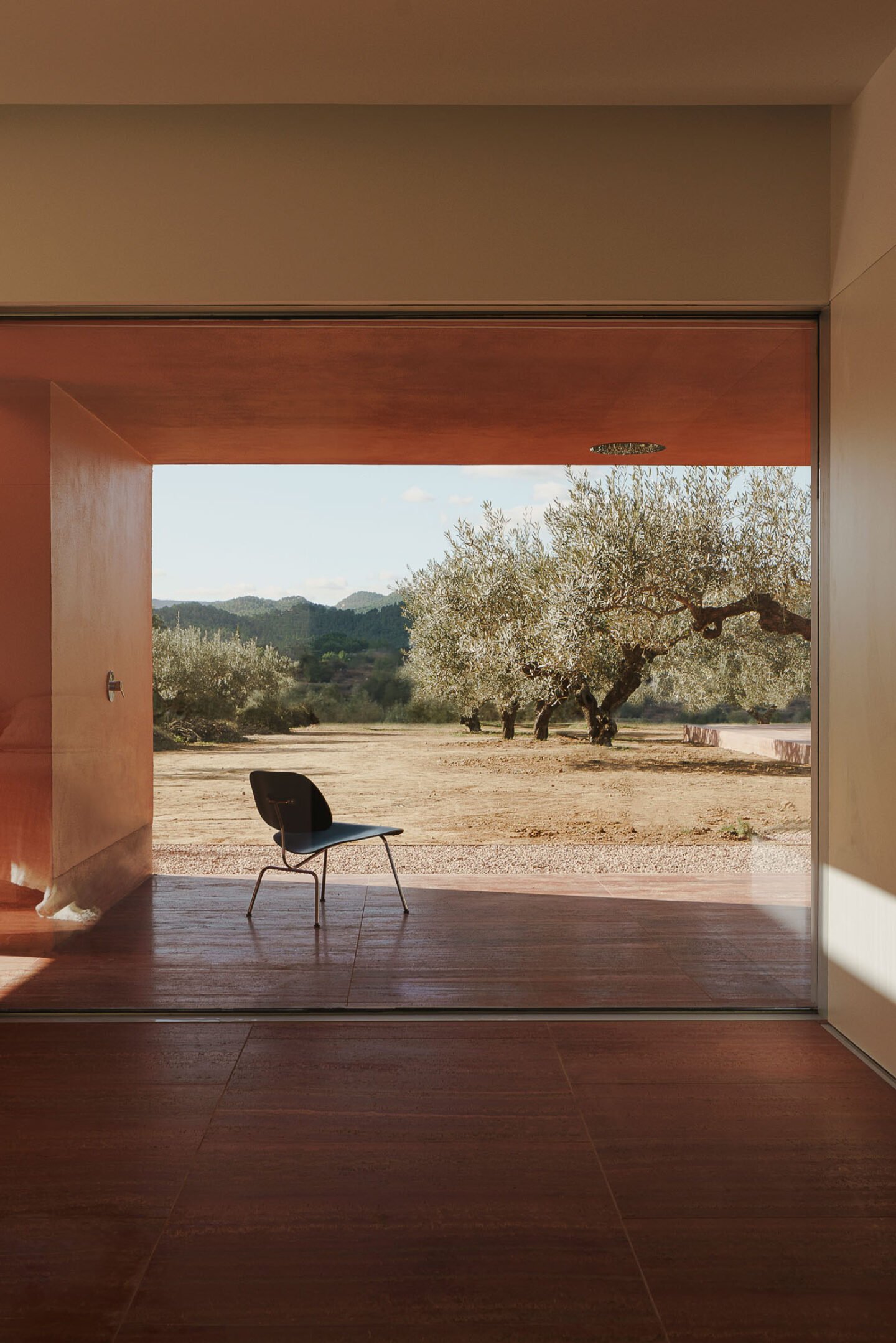
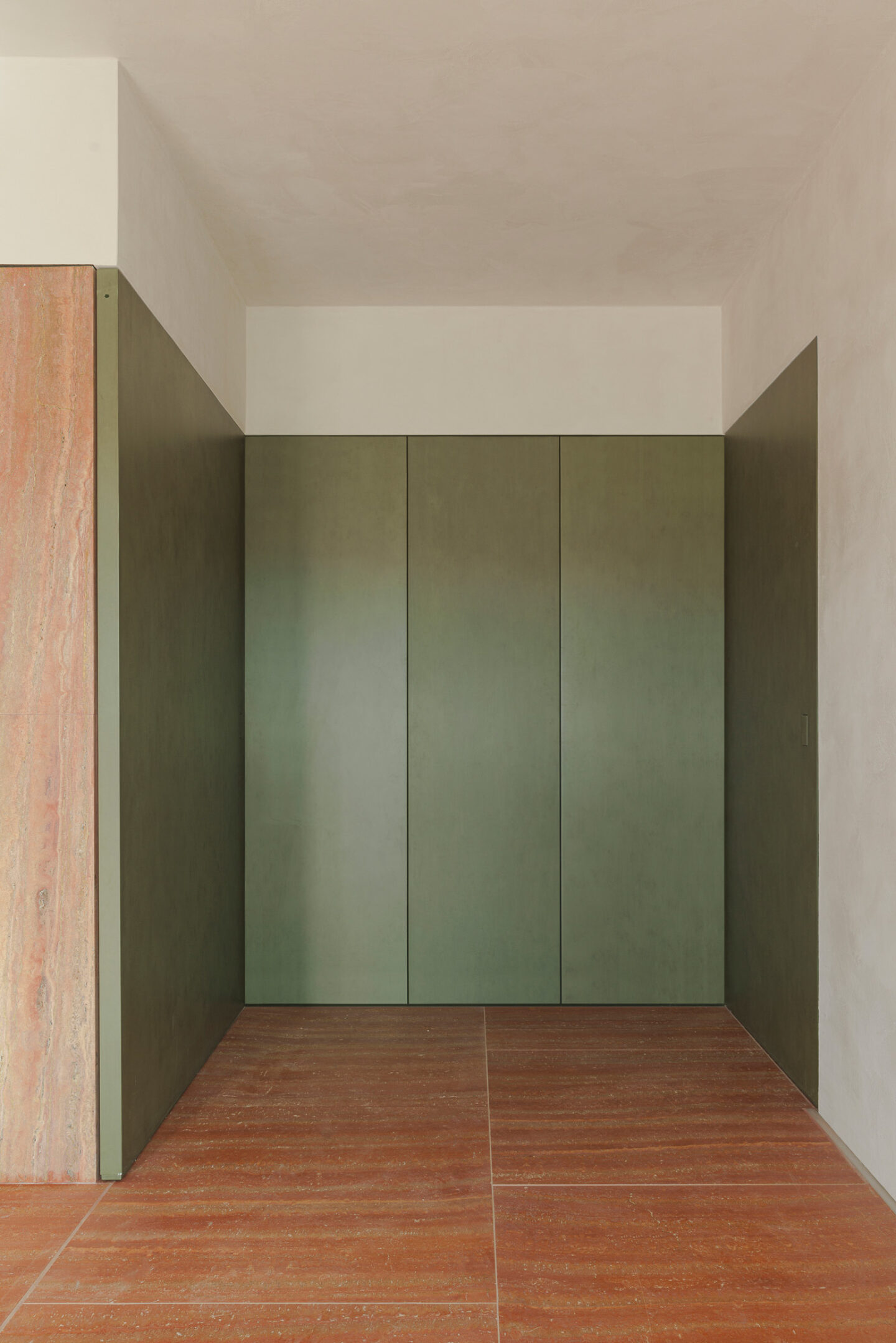
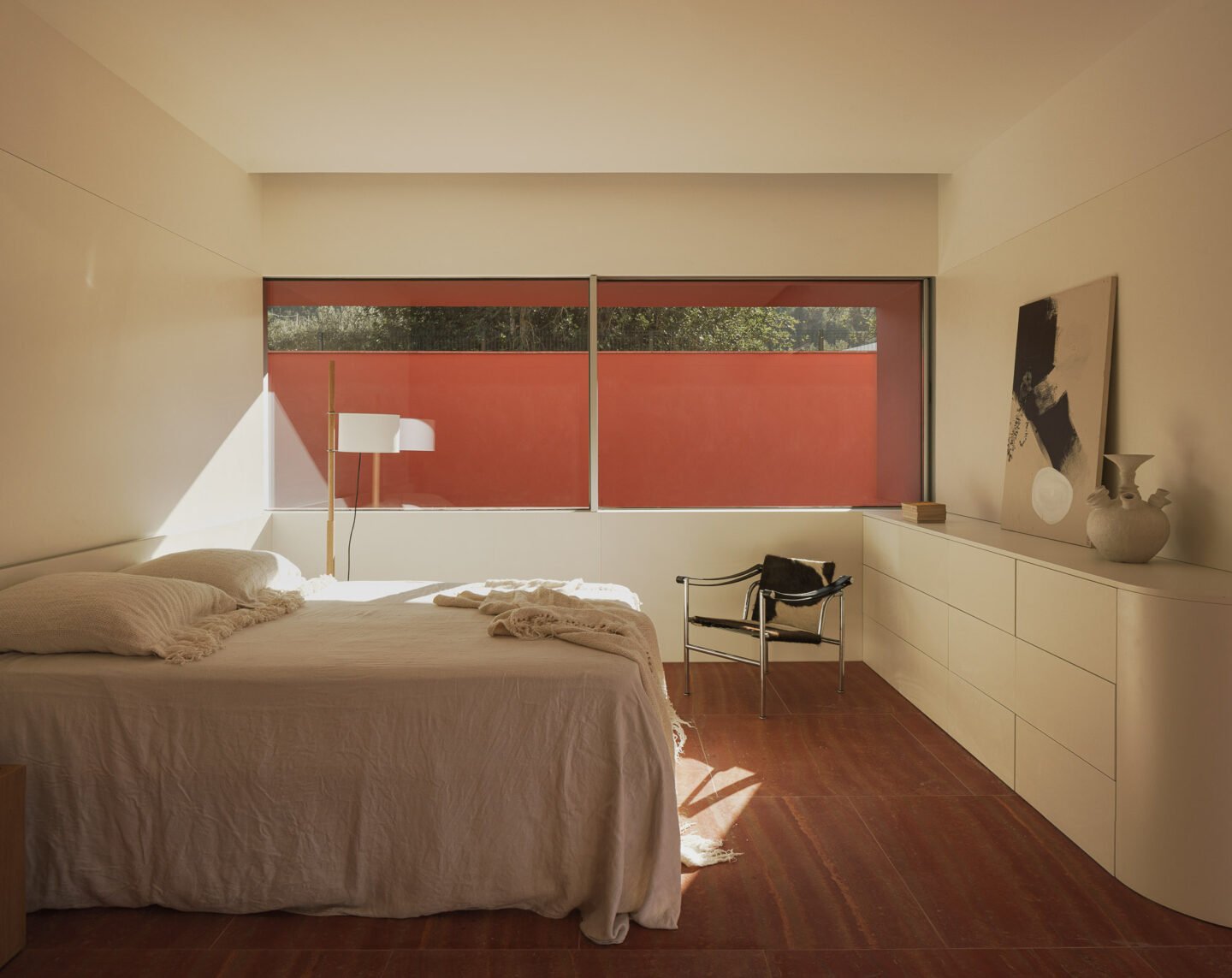
“All rooms have a visual connection with the olive grove, generating magical visuals, connections, lights, and shadows, always with the olive grove as the protagonist.”
At the foundation of your practice is the search for beauty. How did that philosophy apply here? What were the throughlines guiding your search?
Honestly, here we didn’t have to look very hard for beauty because it came as a gift with the plot. Our job was to know how to read this place and complement it with architecture. The olive trees are arranged in a perfect 8 x 8-meter grid, and this was a key factor in the geometry and design of the house. Both the house and the swimming pool take advantage of the free spaces left by the grid of olive trees to insert themselves between them. Therefore, the beauty and the low, elongated shape of the house emerge as a response to the context, together with careful and meticulous work on the proportions of the whole.
Creating harmony with the environment underpinned your choice of materials, which includes Iranian travertine, brass, and olive-green cabinetry. Can you shed light on the process behind their selection and sourcing?
The choice of materials and colors was clear from the beginning. The clients and we were looking for colors that respected the chromatic range that the plot already had when we visited it for the very first time. The reddish color of the land inspired the use of lime mortars and Iranian red travertine. The muted green color of the leaves of the olive trees was used for the woodwork, and the gold of the sun at sunset was reinterpreted in the kitchen with natural brass.
How does the spatial experience respond to the interplay of light and shadow throughout the day?
Besides the porches and patios, the house has several skylights and a dome with an oculus, which allows us to have a changing scenario at every hour of the day. Another strong point is undoubtedly the effect of the water, which generates truly hypnotic moving and undulating reflections. One can sit quietly and enjoy a spectacle of natural visual effects.
Speaking of water, can you share more about its significance to the architectural concept?
This was a request from the clients, who love water, so it has a strong presence throughout the house. One end of the outdoor pool is semi-circular in shape and practically touches the living room window. In this way, the water is felt from the interior space and extends into the olive grove, which serves as the garden of the house. The indoor pool with spa, the showers in the bathrooms, the large windows, and the outdoor showers make the house an experience connected with water. In addition, both pools are heated by solar panels so that they can be used all year round.
Three open courtyards, a veranda, and a platform leading to a pool dissolve the home’s exterior barrier. What kinds of spatial experiences did you want to create in the home’s various sections, both inside and outside?
As I mentioned before, it was very important for us that the interior spaces were in direct relation to this landscape to create a dialogue between the natural and the artificial. Absolutely all rooms have a visual connection with the olive grove, generating magical visuals, connections, lights, and shadows – always with the olive grove as the protagonist.
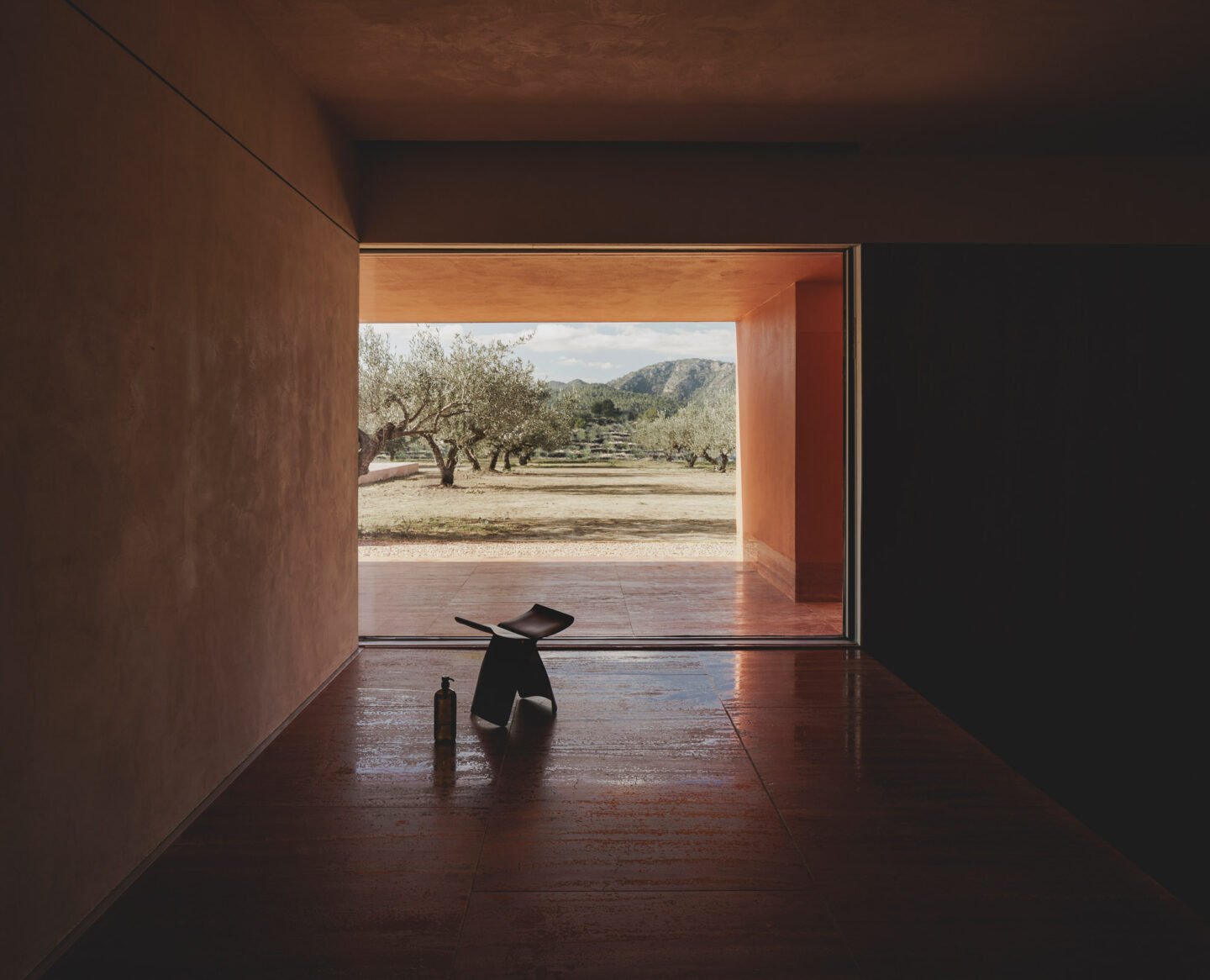
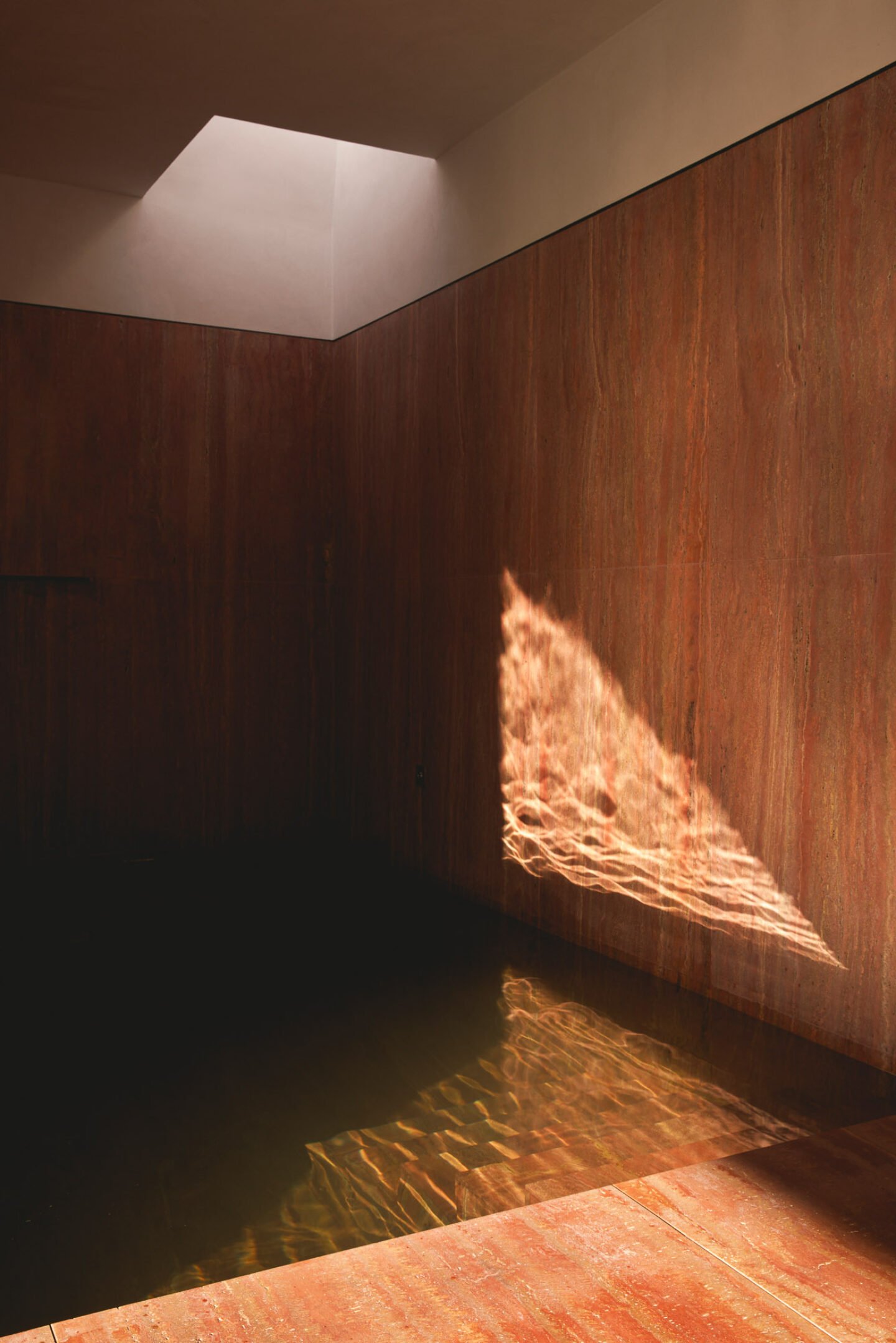
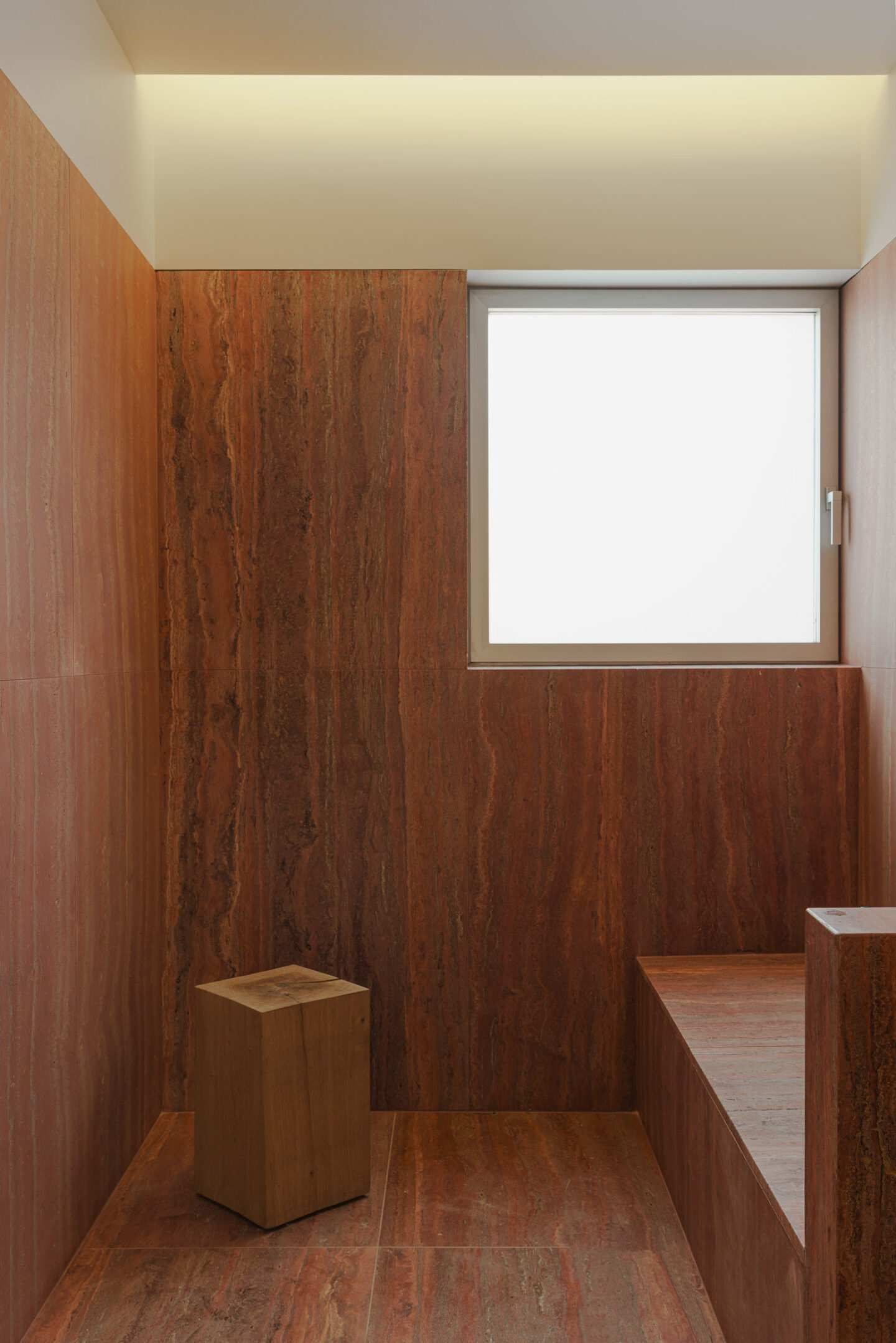
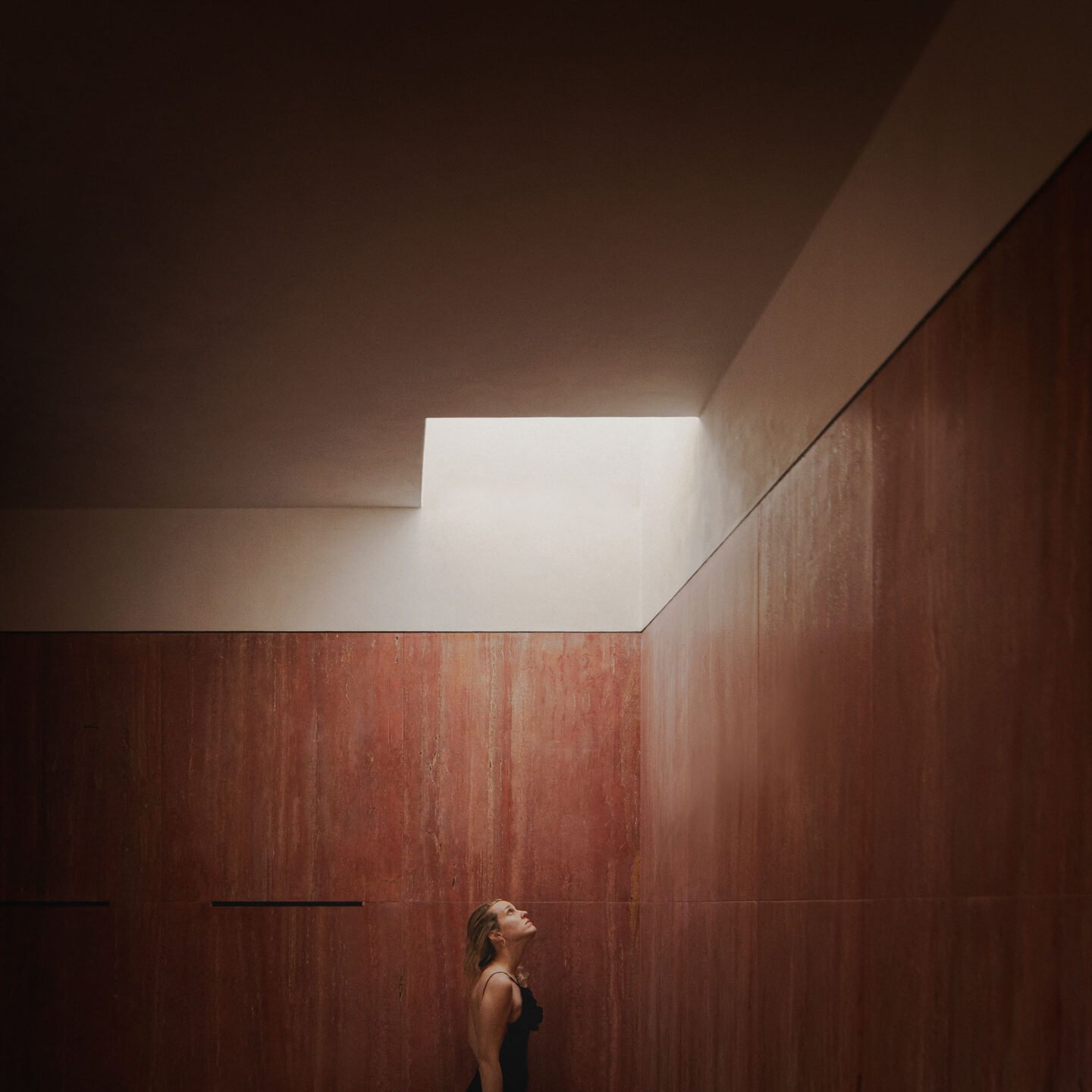
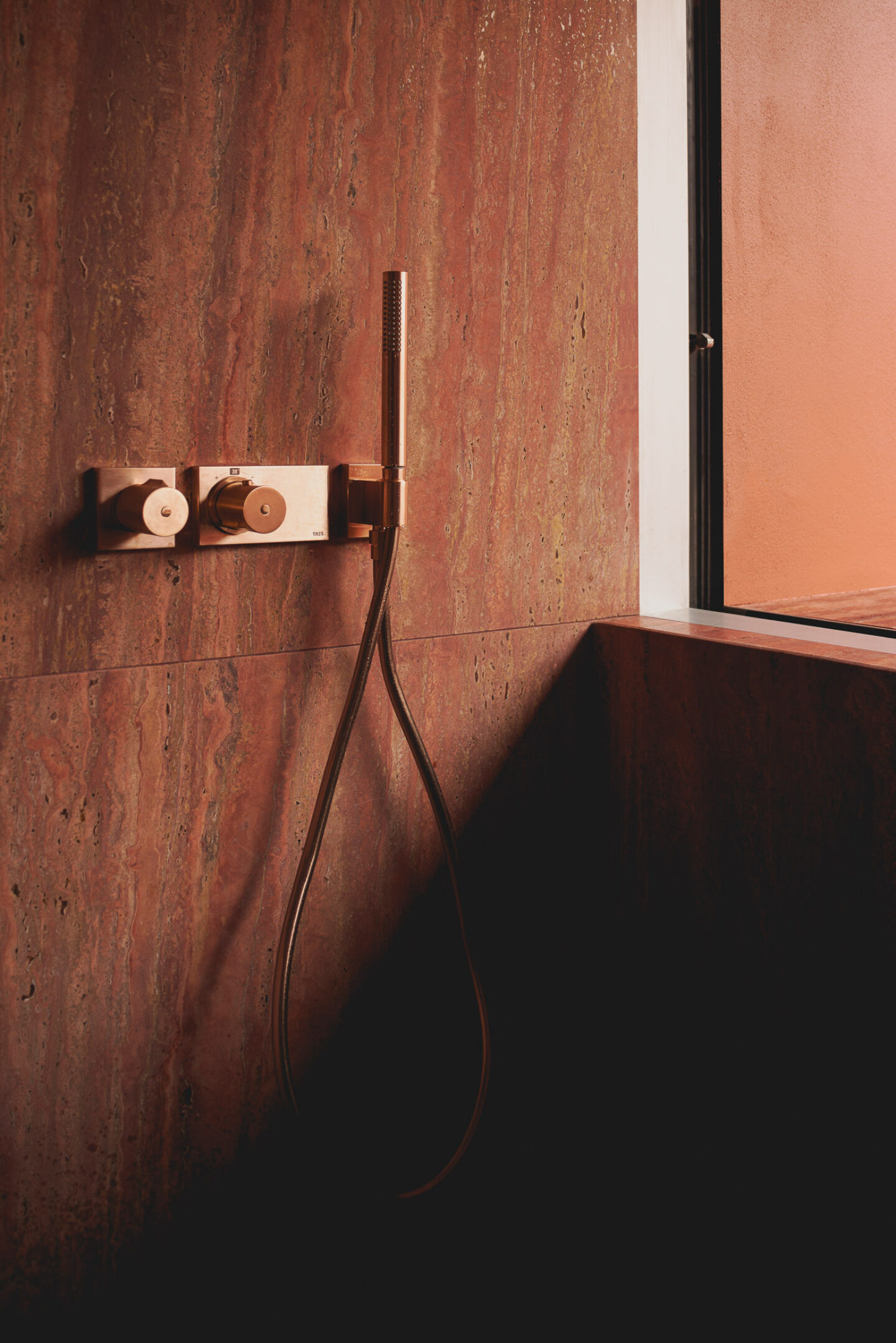
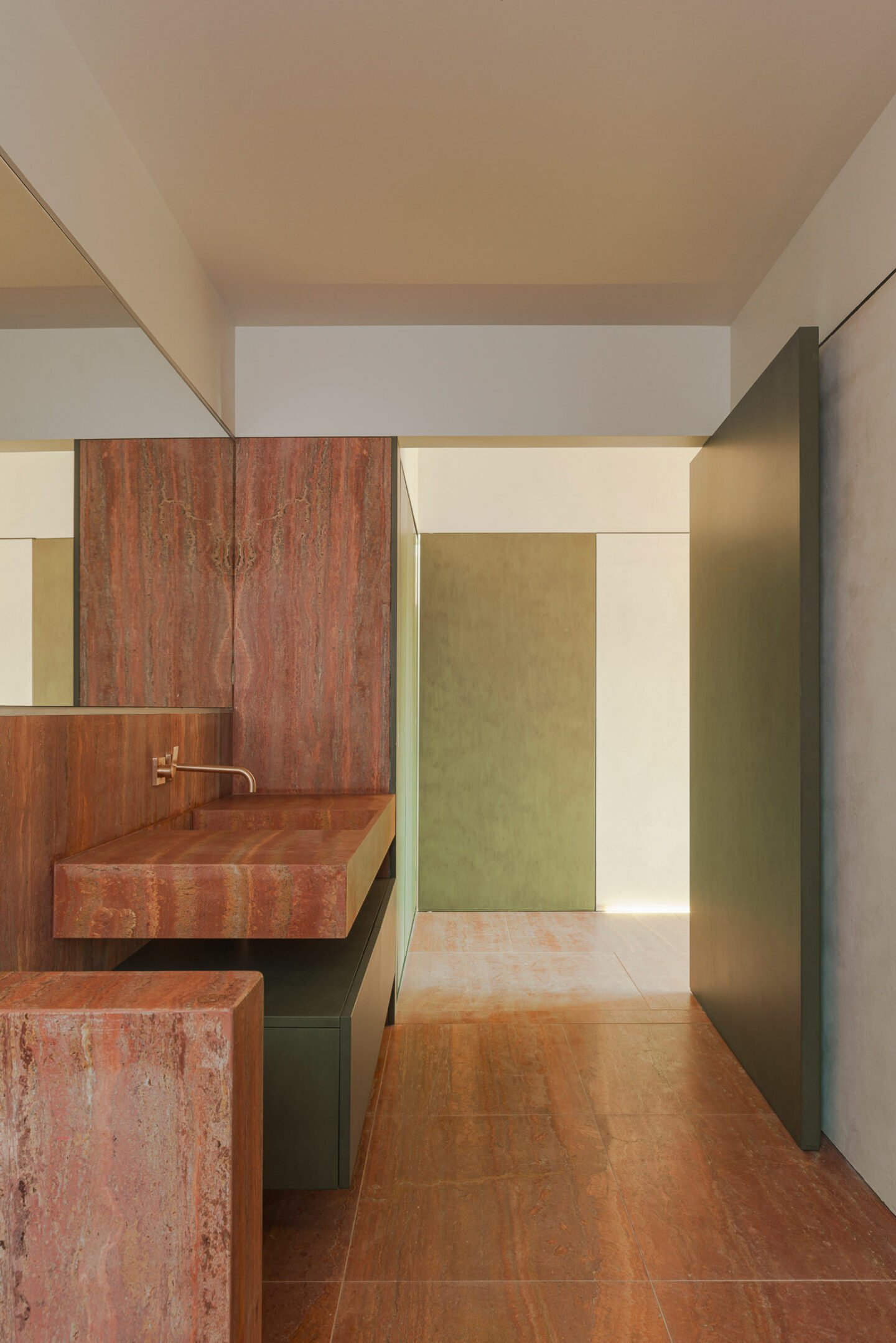
A sense of calm pervades the interior. Beyond restrained material palette and muted tones, what enabled you to achieve a serene atmosphere?
Visually ordered spaces help to create a sense of peace and calm, with well-thought-out proportions, and where everything has a reason and a meaning. We call this a unified overall composition or integrated design. In the same way that bones, organs, and limbs are well ordered in the human body as a whole, in architectural design, everything is related to the other elements.
What was the brief behind the tightly-curated selection of art and sculpture throughout the home, and how did you bring it to life?
At Balzar Arquitectos, we design much of the custom furniture in all projects. In this particular case, we designed the kitchen in natural brass, the sinks in natural stone and bathroom furniture, the bed, and the chest of drawers in the master bedroom and the fireplace. For the other furniture, we worked with the Valencian company Valoffice, which helped us to get fantastic Eames or Le Corbusier pieces. We also have paintings by Rafa García and wonderful sculptures by Canoa Lab.
La Casa de los Olivos fulfills the Passive House criteria, notably low energy consumption. How did you align functional and aesthetic priorities with sustainability considerations?
I sincerely believe that these two factors are not incompatible with each other; sustainability is simply another factor to be taken into account, such as orientation, regulatory requirements, or program needs. This is mainly achieved by applying environmentally friendly principles: high-quality windows, sufficient ventilation, insulation, and reduction of thermal bridges, among other passive principles.
What is special about everyday life in La Casa de los Olivos that can’t be captured through photography?
The photos were taken on a very cloudy and rainy winter day, but in Quesa in particular, we are lucky to have more than 300 sunny days a year. Perhaps the photos do not convey that feeling of good temperature and thermal comfort. And what no photo captures is the smell—the breeze of fresh air with the smell of wild and aromatic plants. Nor do the photos capture the sound of moving water, the sound of cicadas in the sun, the sound of leaves moving in the wind, or simply the absolute silence of the night.
What do the clients love most about living here?
We can’t speak for them, but honestly, there is no greater pleasure than finishing a project and wishing it was our own home. Regardless of what the house is like, I think it is an absolute privilege to enjoy living like this, in the middle of nature but in a village, where you can walk everywhere.
Images © David Zarzoso
